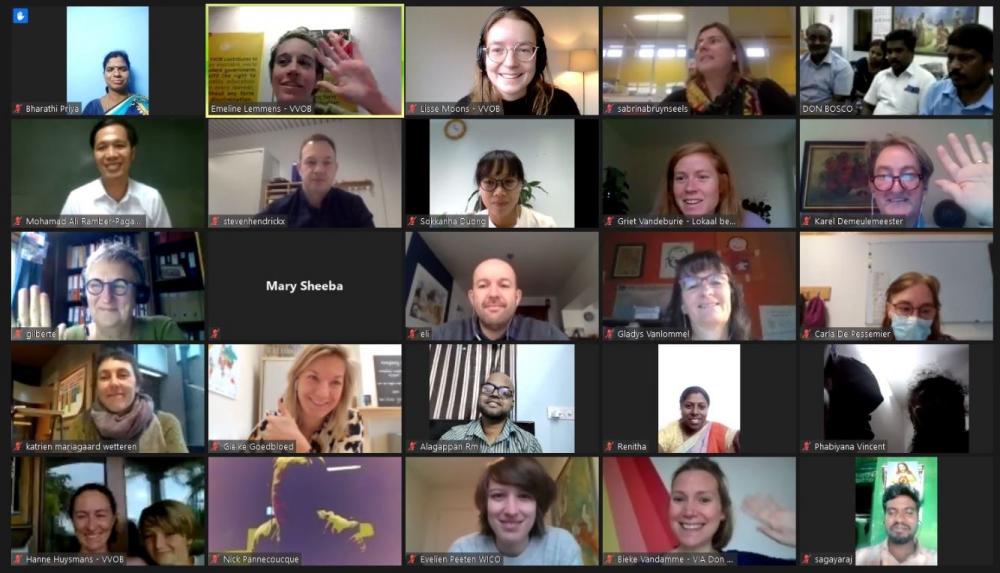A first international exchange is a leap into the unknown. However, the many success stories of Schoollinks have already shown that it brings a lot of advantages. However, what these advantages exactly are and how teachers experience an exchange has not yet been put together in one format. Therefore, together with eNSPIRED, we decided to make a podcast about it.
Want to listen to the podcast right away? Then discover the result here:
Spotify: https://spoti.fi/3aaeFnd
Apple Podcasts: https://apple.co/3dg3mvv
Google Podcasts: https://bit.ly/3mRN27I
Podcast
All interviews were conducted online and the podcast is a montage of four different conversations. The aim of these conversations is to paint a realistic picture of an international exchange. In the podcast you hear (in order) Ha Ahn Phuong, English teacher in Vietnam, Brian Chewe and Flair Kalinga, both teacher trainers at Malcolm Moffat College of Education in Zambia and Bieke Steeman, teacher trainer at Howest.
Overview
All interviewees have participated in one or more international exchanges and are happy to share their experiences. In addition, we ask them about the importance of maintaining a link with a partner school and give them the opportunity to illustrate the impact of an international exchange.
00:00 – 01:48
Why is it a good idea to participate in an international exchange? What is the purpose of this podcast? What and who will you hear in this podcast?
01:49 – 03:36
Ha Ahn Phuong was a candidate for the Global Teacher Prize 2020 and made it to the top 10. She was also a speaker at eNSPIRED's Digital Learning Week.
03:37 – 5:18
Thanks to the learning week, Phuong has a different opinion about multilingualism. She thinks it is important that such events take place; as a teacher you should always be open to learning new things.
05:19 – 08:40
Students living in remote mountainous areas struggle to connect with English and learn the language. How does Phuong manage to do this? What is the Borderless Classroom Model?
08:41 – 11:20
What are the advantages of this model, is there a big impact? The results appear to be very visible.
11:21 – 16:54
There are many other projects that form part of international exchanges, such as an International Lesson Study. Malcolm Moffat, a school in Zambia and Howest, a school in Belgium took part in a Lesson Study. What did the teacher educators from both schools expect from the exchange? What was it like to work effectively together on this project? Brian testifies.
16:55 – 20:39
What did Bieke think of the International Lesson Study? What did she retain?
20:40 – 24:07
There were also challenges associated with this exchange. The way in which pupils and teachers interact proved to be different. Flair explains what they learned from this and how they put this knowledge into practice to this day.
24:08 – 27:25
Both schools want to keep in touch with each other to build a sustainable relationship. This can be done with the help of Schoollinks. Bieke and Flair have a similar opinion on why it is important to keep in touch.
27:26 – 33:05
To conclude, we asked our interviewees what the greatest added value of an international exchange is. Phuong, Bieke and Flair give a diverse answer.


